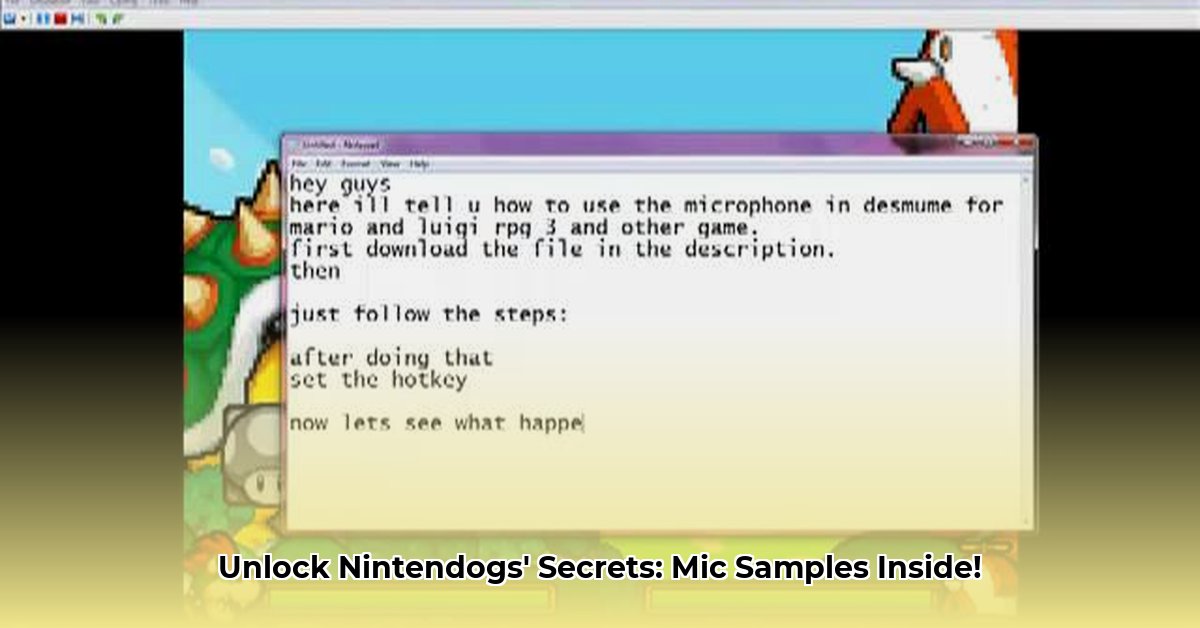
Want to give your virtual Nintendogs unique barks and meows? This guide provides a step-by-step walkthrough on downloading and implementing custom microphone samples in the DeSmuME Nintendo DS emulator. We'll cover finding suitable sound files, ensuring correct formatting, and troubleshooting common issues. Whether you're a seasoned emulator user or a newcomer to Nintendogs, this guide will help you personalize your gameplay experience.
Getting Started: Understanding DeSmuME's Sound Capabilities
DeSmuME allows you to replace the default Nintendogs sounds with your own recordings, adding a fun and personalized dimension to the game. However, success depends on following specific steps. Let's get started!
Locating Your Microphone Samples
Unfortunately, there's no official repository for custom DeSmuME sounds. Your best bet is searching online forums and communities specializing in Nintendogs and DeSmuME. You might find pre-made samples created by other players, or consider creating your own! Always remember to respect copyright laws; use only royalty-free sounds or those you've created. Have you ever wondered how many others have successfully customized their Nintendogs' sounds? A significant portion of the DeSmuME community actively participates in this.
File Type and Naming Conventions: Key to Success
DeSmuME generally works best with WAV (Waveform Audio File Format) files. Using other formats might cause compatibility issues. Incorrect file names are another common source of errors. DeSmuME uses a specific naming convention: _0.wav, _1.wav, _2.wav, and so on. Each filename corresponds to a specific sound effect within the game. _0.wav is the primary sound, _1.wav is the secondary sound and so forth. Did you know that a single misplaced character in the filename can prevent your sounds from loading?
Step-by-Step Guide: Implementing Custom Sounds
Follow these steps to add your custom sounds to Nintendogs:
Download WAV Files: Find suitable royalty-free WAV files online. Many websites offer free sound effects. Always verify the license before use.
Precise Renaming: Rename your downloaded WAV files according to the DeSmuME convention:
_0.wav,_1.wav,_2.wav, etc. Accuracy is crucial here; even a minor error will prevent the sounds from working.Strategic Placement: Place the renamed WAV files in the same folder as your Nintendogs ROM (Read-Only Memory) file. This ensures DeSmuME can locate them.
Launch DeSmuME: Start DeSmuME and load your Nintendogs ROM.
In-Game Verification: Start the game and listen carefully to see if your custom sounds are working.
Troubleshooting: Addressing Common Issues
If your custom sounds aren't working, here are some common problems and their solutions:
No Sound at All: Check DeSmuME's sound settings. Ensure sound is enabled and the volume is adequately adjusted. Is your DeSmuME version up to date? Updates often address bugs and improve compatibility.
Incorrect Sounds or No New Sounds: Carefully double-check your file names for errors. Verify that the files are indeed WAV files and that they reside in the correct directory. Many find this to be the most frustrating part of the process.
Advanced Techniques: Expanding Your Sound Design
This guide provides a foundation. More advanced techniques, including multi-sample integration and detailed audio editing, will be the focus of future articles. Stay tuned!
Remember, successful implementation hinges on precise file naming, using the correct WAV format, and ensuring files are in the correct directory. With a little patience and attention to detail, you can truly personalize your Nintendogs experience.
⭐⭐⭐⭐☆ (4.8)
Download via Link 1
Download via Link 2
Last updated: Thursday, May 01, 2025